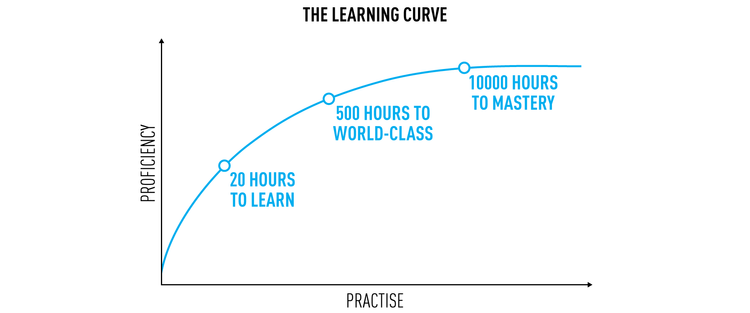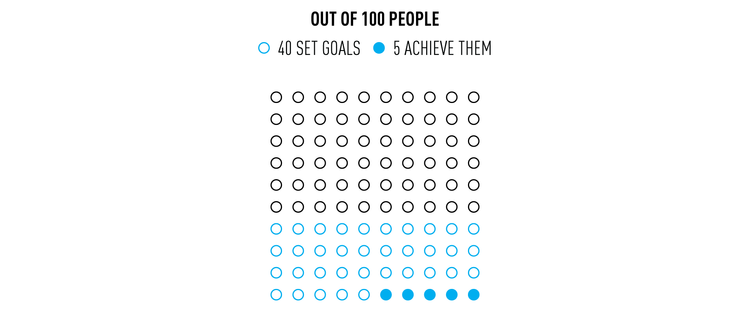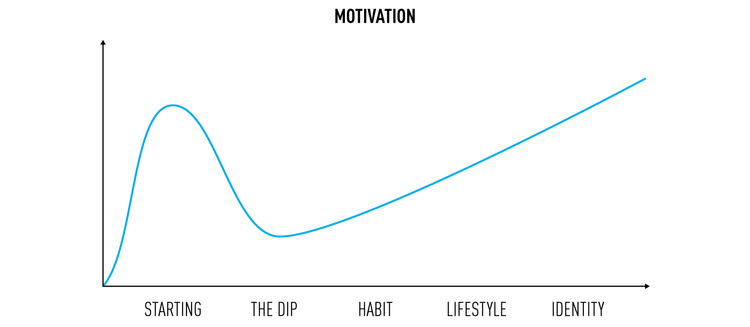Should You Be Optimistic, Pessimistic, Or Realistic?

“The glass is half full,” says the optimist. “The glass is half empty,” says the pessimist. The realist says the glass is actually completely full, filled halfway with air and halfway with water.
I like to see the glass as half full, preferably of Jack Daniels.
Technically the “half full or half empty” question is a false dichotomy and syntax error, since changing the “or” to “and” allows both conditions to exist at the same time. Of course, the question isn’t one of technicality, but of mindset.
There’s utility in optimistic, pessimistic and realistic mindsets, but how can they be reconciled and what is the ideal way to look at the world?
Pessimism
“Seeing the glass as half empty is more positive than seeing it as half full. Through such a lens the only choice is to pour more. That is righteous pessimism.” ― Criss Jami
Being focused on the negative helps spotting potential threats and dangers. Pessimists look both ways when crossing the street and bring life jackets for the boat.
Biologically, humans seem to be hardwired as pessimists. In psychological science, this is called negativity bias, which is the human tendency to place greater psychological weight on negative things compared to neutral or positive ones.
Pessimism has historically been a key trait to our survival, as it pushed humans to take preventative measures against potential dangers. Thousands of years ago, these measures could’ve been the difference between life and death. Almost every culture has a myth of decline from some golden age, and almost all peoples throughout history have been pessimists. Perhaps this is exactly why humans have survived till now.
In modern times, although there are less life threatening dangers, pessimism may ensure continual progression in other domains. For instance, students’ pessimism may enhance their academic endeavors. Firstly, the expectation of poor performance can buffer against failure should it occur. Secondly, the concern about failure may prompt students into action. Researchers have coined this strategy as “defensive pessimism,” and they find that “defensive pessimists tend to perform as well as academic optimists (with a similar performance background) on tests” [1].
A pitfall of negativity bias, is that it tends to distort people’s view of reality. That includes you, the reader. You are in all likelihood impacted by negativity bias such that you perform worse than random in multiple choice quizzes on world-issues. Don’t believe me? Test yourself here. Hans Roling has a fantastic TedTalk about this phenomenon, and he points out that people (you included!) have a high statistical chance of being quite wrong about what they think they know.
A cornerstone of many ancient philosophies is that trying to be happy could make you miserable. With this mind, pessimism can be an advantageous mindset, as research shows accepting negative emotions and thoughts can reduce them [2]. Indeed If you expect the worst, you’ll never be disappointed.
Pessimism works as a self-defeating prophecy, whereby predicting a bad future may make people work towards minimizing bad things, such that the future may not turn out so bad after all. In this way, pessimists are preventative in nature. That is, they focus on preventing bad things from happening. On the other hand, optimists focus on creating good things.
Optimism
“Be careful what you water your dreams with. Water them with worry and fear and you will produce weeds that choke the life from your dream. Water them with optimism and solutions and you will cultivate success.” ― Lao Tzu
Some of the most influential figures in human history are optimists, including the Dalai Lama, Winston Churchill, Henry Rollins, Clint Eastwood, Hellen Keller, Walt Disney and Nelson Mandela. Indeed it seems some degree of optimism is necessary for making an impact on the world, because unless you believe that the future can be better, you are unlikely to step up and take responsibility for making it so.
Optimism is correlated with taking ownership, having a growth mindset and high self-efficacy. While pessimists focus on excuses, optimists look for solutions instead. If you constantly look for ways to solve problems or overcome hurdles, you build neurological pathways in your brain for solution-finding. Most people have a neurological highway to coming up with excuses, but a dirt road to finding solutions.
Optimists have more resilience against obstacles and setbacks than pessimists. Paul Alexander is a Polio survivor, who is almost entirely immobile, but that didn’t stop him from writing a book using his mouth to write. Drew Lynch has a severe stutter, but that didn’t stop him from becoming a successful comedian and finishing 2nd on America’s Got Talent 2015. Nick Newell was born with a congenital amputation of his left arm, which ends just below his elbow, but that didn’t stop him from becoming a great MMA-fighter.
From a mental health perspective, it is beneficial to be optimistic. As Roman Stoic Philosopher Seneca points out, “we suffer more in imagination than in reality.” As such, being pessimistic causes unnecessary suffering in the present moment. Moreover, research indicates that optimists tend to have better life outcomes than pessimists, including physical health and sport performance [3] [4] [5] [6]. In fact, optimists live longer than pessimists on average [7], and may have better cognitive abilities at old age [8].
Realism
“The pessimist complains about the wind; the optimist expects it to change; the realist adjusts the sails.” ― William Arthur Ward
Amazon founder Jeff Bezos was ruthlessly realistic about his chances of success when starting the company. He told his parents — who gave him $245,573 to help build the business — that it was “very likely they’ll lose their entire investment in the company”. In fact, he estimated that there was only a 30% chance his business would succeed, which was based on statistics of failure rates of startups. He was neither swayed by optimism nor pessimism, as his assessment was more or less completely data-driven and logical.
American inventor, architect and author Richard Buckminister Fuller mirrors Bezos’ sober mindset. He writes: “I am not optimistic or pessimistic. I feel that optimism and pessimism are very unbalanced. I am a very hard engineer. I am a mechanic. I am a sailor. I am an air pilot. I don’t tell people I can get you across the ocean with my ship unless I know what I’m talking about.”
“To think in terms of either pessimism or optimism oversimplifies the truth. The problem is to see reality as it is.” ― Thich Nhat Hanh
Amongst investors, being realistic about the valuations of businesses is critical for success. Benjamin Graham, one of the most influential investors of all time, postulates that “the intelligent investor is a realist who sells to optimists and buys from pessimists.”
Some people, like Will Smith, consider a realistic mindset as a surefire path to mediocrity. In contrast, people like Osho, Che Guevara, David Ben Gurion and Wayne Dyer are quoted as saying variations of “I am realistic – I expect miracles.” For them, great things are a normal part of life. It can be reasonably claimed that life itself is a miracle, considering the probability of every one of your ancestors reproducing successfully, your parents meeting each other combined with the probability of the right sperm meeting the right egg to create you. A miracle is an event so unlikely it’s almost impossible. By that definition, you are a miracle.
Being realistic can protect you against the effects of survivorship bias. In essence, when you focus too heavily on “survivors,” you ignore important qualities about the rest of the population. For instance, a person may think “Steve Jobs, Bill Gates, and Mark Zuckerberg are college dropouts and they became billionaires, so I should drop out too.” Of course, these billionaires are the outliers. There are plenty of unsuccessful college dropouts who’s tales you’ll never hear. A realist will instead look at the data and realize that 94% of United States’ most successful businesspeople graduated college [9], and having a college degree greatly improves employability and earning potential [10].
Reconciling
“There’s no harm in hoping for the best as long as you’re prepared for the worst.” ― Stephen King
Some people may say they are pessimists because they’re realistic. A counterargument to this is our aforementioned biases. Negativity bias evolved in a time it was necessary for our survival; in modern times and the safer societies of today, it overcompensates and distorts our view of the world. The truth is, people’s worldview generally doesn’t adjust to facts and data as much as they think it does. In other words, people are generally not pessimists or optimists because of what they know about the world, but instead interpret information through the lens of whatever pessimism or optimism they already have.
Scientific studies show that optimism is generated primarily in the left brain hemisphere. This side is also associated with high self-esteem and a cheerful, positive attitude. The right brain hemisphere is associated with pessimism, as well as low self-esteem and a negative attitude [11]. With this in mind, it seems clearly superior to want more left brain activity.
While excessive optimists may be naïve about risks, and excessive pessimists may be overwhelmed by them, people can learn how to take calculated risks. Always consider the risk-return tradeoff, such that the expected value of your endeavors are worthwhile.
Consider what Randy Paush calls ‘the eaten by wolves factor’, and Tim Ferriss calls ‘fear setting’. What is the worst case scenario? Would I be eaten by wolves? Defining your fears can help you objectively evaluate them, and plan for how to overcome them if they do occur. In this way, optimism is practical and good if you have a contingency plan for when things go wrong.
The optimum level of self-efficacy and optimism is slightly above reality; in this situation, people are most encouraged to tackle challenging tasks and gain experience. When you’re contemplating the things you can and cannot improve, err on the side of thinking you can improve much more than you can, because often you will be able to.
At the same time, be cautious when artists and other famous people advise you to “follow your passion!” They are the lucky few that made it, when most artists don’t. Don’t fall for survivorship bias. Still, if after fear setting and carefully evaluating the risk-return tradeoff, you still want to pursue your dreams, then go for it. After all, someone who is truly passionate about what they do will not stop no matter how difficult or unrealistic it is. As Marie-Louise von Franz writes: “It’s easy to be a naïve idealist. It’s easy to be a cynical realist. It’s quite another thing to have no illusions and still hold the inner flame.”
Arguments of pessimism are powerless to comfort. Pessimists think optimism is a form of coping or escapism. Optimists don’t care what they think, and just enjoy their lives. Besides, it is quite gratifying when pessimism goes unrewarded.
Both desperation and inspiration can be catalysts for improvement. Pessimists run away from bad situations. Optimists run towards good situations. Ultimately they’re running the same way, towards improvement. Being a realist is seeing clearly how far along the path you are.
Expect the best, prepare for the worst, take calculated risks, and above all: Aspire to have pragmatic enthusiasm for what can be achieved.





